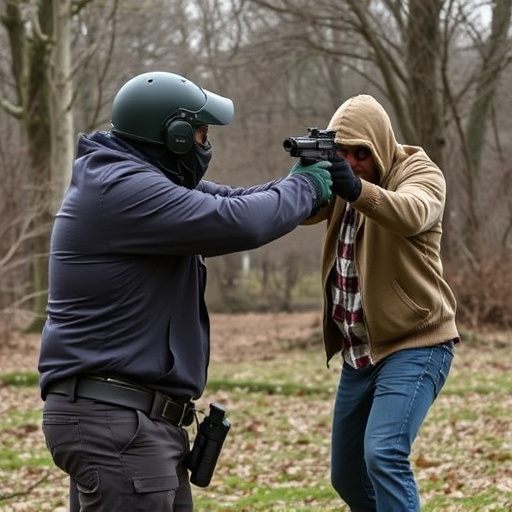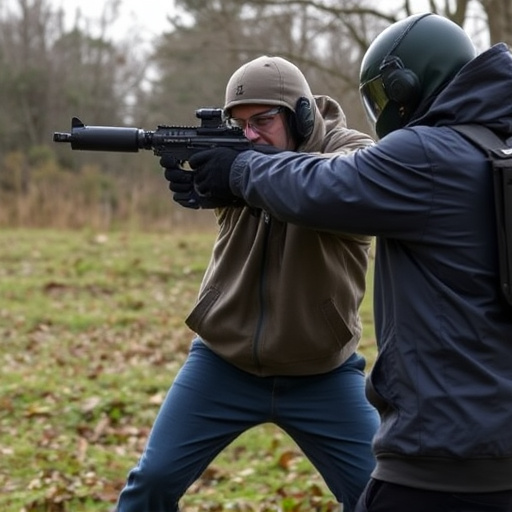Civilian ownership of pink stun guns with disable pin safety features is popular but regulated by varying state laws. Potential buyers must understand local regulations regarding age restrictions, licensing, storage, and permitted use scenarios before acquiring such a device. Some states have unrestricted purchases while others mandate background checks or specific training certifications. Understanding these laws is crucial for legal compliance and responsible ownership of this specialized self-defense tool.
“Unraveling the legal landscape surrounding civilian taser ownership, this comprehensive guide delves into state laws and regulations. From federal oversight to unique state-specific rules, understanding these guidelines is paramount for responsible ownership of a pink stun gun equipped with disability and safety features.
Explore essential requirements, learn about authority clashes between federal and state bodies, and discover the intricacies of compliance to ensure your rights and responsibilities are fully understood.”
- Understanding Civilian Taser Ownership: A Legal Perspective
- Federal Regulations vs. State Laws: Who Has Authority?
- Requirements for Owning a Pink Stun Gun
- The Role of Disability and Safety Features
- State-Specific Rules and Restrictions
- Ensuring Compliance: Your Rights and Responsibilities
Understanding Civilian Taser Ownership: A Legal Perspective

Civilian Taser ownership, particularly for self-defense, has gained popularity, leading many to seek information on state laws regarding these devices. The legal landscape surrounding personal stun guns, like the pink stun gun with a disable pin safety feature, varies significantly across states in the US. Understanding these regulations is crucial before considering the acquisition of such a device.
Each state has its own set of rules and restrictions, ranging from age limitations to permits and specific prohibitions. Some states allow open carry while others restrict it to concealed carry with appropriate licenses. The presence of a disable pin safety feature on a pink stun gun may be seen as an added security measure, but users must still navigate state laws regarding stun guns’ legal classification, use, and storage.
Federal Regulations vs. State Laws: Who Has Authority?

In the United States, the authority to regulate civilian tasers and their ownership lies in a complex interplay between federal and state laws. While the Federal Government has established guidelines for specific aspects, such as the import and export of stun devices, state laws hold the lion’s share of control over who can own and carry these devices. This disparity in regulatory power results in varied rules across different states regarding the acquisition, possession, and use of tasers by civilians.
For instance, some states allow individuals to purchase and own a pink stun gun with a disable pin safety feature without any special licenses or permits. Others have more stringent requirements, mandating background checks, training certifications, or even limited access to certain types of stun devices. The diversity in state laws can make navigating the legal landscape challenging for potential owners, emphasizing the need for thorough research before considering the acquisition of a civilian taser.
Requirements for Owning a Pink Stun Gun

In many states, owning a pink stun gun comes with specific requirements, especially when it features a disable pin safety mechanism. This advanced safety feature is designed to prevent accidental discharges and unauthorized use, making it a desirable option for personal protection. Before purchasing such a device, individuals must meet certain criteria as outlined by state laws.
The first step is to ensure that you are over the legal age, typically 18 or 21 years old, depending on your location. Additionally, some states mandate successful completion of a safety training course or passing a background check. Certain regions also require registration or licensing for stun guns, and there might be restrictions on the capacity of the device’s electric charge. Owning a pink stun gun with a disable pin safety feature is a responsible choice, ensuring both user safety and compliance with local regulations.
The Role of Disability and Safety Features

In considering civilian taser ownership, particularly unique models like the pink stun gun with a disable pin safety feature, disability and safety aspects are paramount. These advanced devices often incorporate specialized features designed to mitigate risks and ensure responsible use. For instance, the disable pin mechanism allows users to safely render the device inactive if needed, enhancing control during potentially volatile situations. Moreover, accessibility considerations for individuals with disabilities are addressed through ergonomic designs and various activation methods, ensuring inclusivity without compromising safety standards.
The integration of such features not only caters to diverse user needs but also aligns with broader legal frameworks that prioritize public safety. State laws regarding taser ownership often include specific provisions related to safety mechanisms and responsible use, underscoring the importance of selecting devices equipped with contemporary safety features. This trend reflects a growing awareness of both the potential benefits and risks associated with civilian taser ownership, fostering a more balanced and informed approach to personal protection.
State-Specific Rules and Restrictions

Each state in the US has its own set of rules and restrictions regarding civilian ownership of tasers, often referred to as stun guns. These regulations can vary widely, from strict licensing requirements to more lenient guidelines for qualified individuals. When considering purchasing a taser, such as a pink stun gun with a disable pin safety feature, it’s crucial to understand the specific laws in your state.
For instance, some states require a permit or license to own and carry a taser, while others only mandate registration. There might also be restrictions on the type of taser allowed, such as voltage limitations or specific design requirements. Additionally, certain locations have rules about where and how these devices can be used, including self-defense scenarios. Staying informed about these state-specific rules is essential to ensure compliance with local laws and promote safe ownership.
Ensuring Compliance: Your Rights and Responsibilities

When considering civilian taser ownership, it’s crucial to understand and adhere to state laws governing such purchases and use. Each state has its own set of regulations regarding stun guns, including pink stun guns with disable pin safety features. Compliance is not just about avoiding legal penalties; it ensures responsible gun ownership and public safety.
Your rights and responsibilities extend beyond simply acquiring a taser. You must be aware of age restrictions, permit or licensing requirements, and any limitations on where and how you can use the device. For instance, some states may allow tasers for self-defense but have restrictions on their use against law enforcement or in certain public spaces. Always check your state’s specific laws to ensure compliance and fully understand your rights as a civilian taser owner.
In conclusion, understanding the legal landscape surrounding civilian taser ownership, specifically focusing on state laws and federal regulations, is crucial. When considering acquiring a pink stun gun equipped with disability and safety features like a disable pin, it’s essential to familiarize yourself with your state’s specific rules and restrictions. By ensuring compliance with these requirements, you not only protect your rights but also uphold your responsibilities as a responsible owner. This comprehensive guide aims to empower individuals to make informed decisions regarding the ownership of such devices while navigating the intricate web of regulations.
